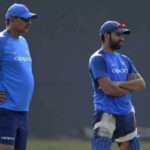In the four-day military conflict between India and Pakistan, which began on the intervening night of May 6 and May 7, defence sources said that New Delhi managed to hit multiple military installations in the neighbouring country and thwarted a barrage of attacks from them due to a successful integration of the country’s “space know how”, “electronics” and “computing expertise using artificial intelligence (AI)”.
Sources said that India having its indigenous navigation systems, to intercept enemy objects through both hard and soft kill techniques and its deeper and precise penetration ability to strike strategic locations in Pakistan demonstrated the country’s growing capabilities to use technological advances as a strategic advantage.
The Indian armed forces used AI cloud-based integrated air command and control systems to detect and position any hostile objects in the sky. “From detecting a radar picture of an enemy object in the sky, or taking a strategic position to shoot it down from land, sea and air was demonstrated using AI cloud-based state of the art integrated air command and control systems,” a defence source said.
Many of the country’s integrated technology capabilities were deployed towards creating an impenetrable shield against incoming aerial threats from Pakistan during the military conflict of the past week. The use of these technologies found its roots more than half a decade ago, when the armed forces began the thought work to utilise AI in their defensive and offensive capabilities.
In 2018, the Ministry of Defence (MoD) had set up a multi-stakeholder task force to study issues around the strategic implications of AI from a national security perspective. Based on the recommendations of this task force, the MoD created the Defence AI Council (DAIC) and Defence AI Project Agency (DAIPA) for providing necessary guidance to enable the development of an operating framework, policy level changes and structural support for AI adoption in the armed forces.
In 2022, the government also finalised a roadmap for defence public sector companies under which 70 defence specific AI projects were finalised, of which 40 had been completed. Until 2026, a total of 129 AI-based projects have been greenlit in the defence sector of which 77 have been completed. As of 2022, Rs 100 crore was allocated by each defence service for AI implementation.
Bharat Electronics Limited, for instance, has developed an AI-based system for enemy aircraft activity recognition and classification which enables the armed forces to automatically recognise and identify enemy aircraft’s plans, leading to improved situational awareness. This solution is likely to be available in India’s Integrated Air Command and Control System (IACCS). The PSU has also developed the Indian Air Force’s IACCS that integrates data from all air defence assets to give the armed forces comprehensive situational awareness during air operations, allowing them to respond to a wide range of aerial threats.
The Indian Army has developed an AI-Based Intercept Management System (IMS) to analyse and automate intercepts of an adversary in Western Theatre. The software makes use of visualisation techniques and AI to interpret op-critical data, generating an accurate intelligence picture. The IMS can carry out automated analysis and interpretation using AI, and categorise and visualise intercepts using data science tools.
The Centre for Artificial Intelligence & Robotics (CAIR) under the Defence Research & Development Organisation (DRDO) has also developed a Air Defence Control and Reporting System (ADC & RS), which is used to detect all aerial targets and neutralise the threat well away from vulnerable areas by effective integration of all air defence weapon systems.








